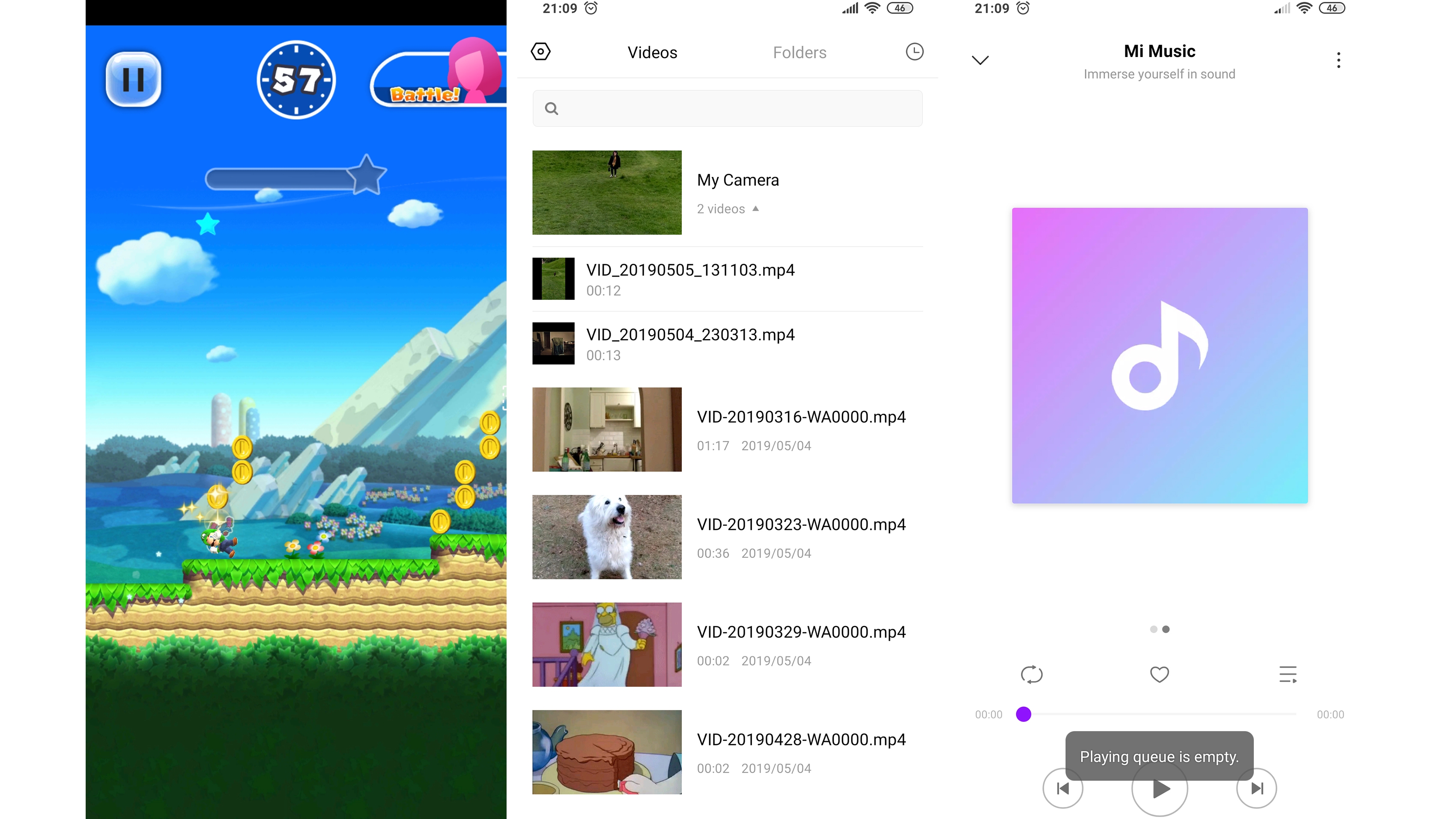Why you can trust TechRadar
Interface and reliability
- Runs Android 9 overlaid with MIUI
- Xiaomi's interface is a long way from stock Android
Xiaomi, like most manufacturers from China, has opted to produce its own ‘fork’ of Android. This means that the result, MIUI, is quite different from your ‘standard’ Android, being quite far from Google’s original - stripped back - version.
In countries such as China, where Google cannot operate fully, this is a strength. In the west, the jury is out on the issue.
Regardless, MIUI is what we have on the Redmi Note 7, making its presence known at every juncture. Apps do not go into a drawer when installed, instead they continue off into infinity on home screens to the right.
There’s a security manager, an app manager, a battery manager, a memory manager, a theme engine and more. Xiaomi also makes money from selling its own services, so in addition to this there is a custom Music app, a custom Movies app, a custom Cloud account app - the list goes on.
There is indeed a lot of bloatware on this phone, at least when it comes to system apps - it is no Google Pixel 3.
At least when it comes to speed, there is no obvious impact. Whether due to optimizations, the generous system specifications or otherwise, the handset flies through basic navigation with ease and has no issue handling the majority of games or tasks.

That isn’t to say there aren’t issues and bugs however, for they do exist. The sometimes overly vigilant policing of background processes in the name of protecting battery life will irritate some.
Sign up for breaking news, reviews, opinion, top tech deals, and more.
For others, the difficulty in setting different default apps, such as switching away from the default home-baked browser will be no small annoyance.
And whether due to the particular customizations to Android or otherwise, many apps do not gel well with the odd screen ratio. PUBG in particular was rendered unplayable due to odd scaling issues.

For most people who tend not to do too much digging, the presence of MIUI will not be a major issue - indeed it is not much more of a departure from stock Android than Samsung's One UI or Huawei’s much-criticized EMUI.
For the Android purist however, the heavy-handed attempts to sell services and relentless customizations may prove to be too much to bear.
Movies, music and gaming
- Good for gaming and video
- Internal speaker is reasonable
- Has a 3.5mm headphone port
For those who love to watch movies and read on the go, there are few better budget devices than the Redmi Note 7.
The capacious, bright screen makes it a joy to watch video on, whether during the commute or at home. And the strong battery life make this an excellent contender for road warriors who are consistently on the move and who value staying power above all else.
Locally stored video is handled via Xiaomi’s own custom app, which does do its best to direct you to paid offerings.
This is the same with the Music app, which handles locally stored MP3 files. Those who enjoy listening to music on the go will be well served by the 3.5mm headphone jack, while the bottom-firing speaker does a mostly decent job at cranking out beats. Anything with a heavy bass will be beyond it however.

As for gaming, there are few better choices at the price point. Between battery life, performance and the viewing experience, the Redmi Note 7 is an excellent pick for those looking to enjoy a little gaming on the go, or at home.
Even after playing for extended periods, we also found that the device failed to heat up significantly, which bodes well for its long-term health.
Performance and benchmarks
- Strong performance for the money
- Comes with either 3GB or 4GB of RAM
The Redmi Note 7 comes in two flavors, each with different storage capacities and RAM options. Buyers have the choice of either 3GB of RAM and 32GB of storage, or 4GB of RAM and 64GB of storage.
Either option is certainly sufficient for everyday use, though those keen on gaming will want to opt for the higher capacity variant. In the day to day, swiping between different screens and using ‘normal’ apps (banking, messaging etc) the device is perfectly snappy.
For the money, the general performance cannot be faulted.

This holds true for the benchmarks, which are very encouraging. Both the single and multi-core scores are impressive, with the latter in particular being not too far from the score achieved by various Snapdragon 835 equipped devices, such as the Samsung Galaxy S8.
It is easy to read too much into benchmark scores, being as they are artificial, however these results are excellent nonetheless.

In general, we found signal performance to be what one might expect. Transfer speeds on Wi-Fi and mobile internet are both consistent and strong, while network reception was about average.
Current page: Anything else I should know?
Prev Page Battery life and camera Next Page Verdict and competitionSean is a Scottish technology journalist who's written for the likes of T3, Trusted Reviews, TechAdvisor and Expert Reviews.
